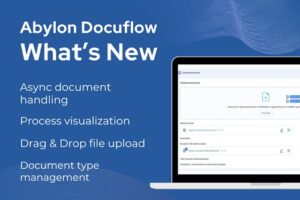
Railways - a world of diverse, complex and challenging BI and data projects

Abylon Consulting and the Hungarian Railways
Hungarian railways have been a priority sector in the life of Abylon Consulting practically since the company was founded. We have been working together successfully for 5 years now and we hope to continue our professional cooperation well into the future.
The planning, organisation and monitoring of rail transport is a very complex process. The individual areas involved are themselves highly complex units, whether it is maintenance, sales or traffic management.
It is often difficult for an IT service provider, consultant or developer to adapt to the specificity of the rail sector. Beyond the physical reality, there is also a complex legal regulatory environment to adapt to.
On the other hand, it is this complexity, these specific needs, that also present an interesting challenge for BI companies dealing with large amount of diverse data like Abylon.
At Abylon Consulting, we pride ourselves on our many years of cross-disciplinary experience in rail IT. The results of our BI projects serve real business needs, help strategic decision making, and also help track day-to-day business operations. Understanding needs, data and customer satisfaction are a top priority in our projects.
Rail BI and data project delivered by Abylon
Below we would like to give you a taste of some of the areas where we have been working together with the Hungarian railways in recent years:
- Passenger sales
- Train traffic, events affecting train traffic
- Passenger count/occupancy data
- Infrastructure sales
- Vehicle technical condition monitoring
- Measurement of staff performance
These projects involved a total of 13 data models/data marketplaces operating in an on-premise environment among the Hungarian rail transport stakeholders, as well as a cloud pilot project.
Our solutions work in a Microsoft environment, using SQL Server, SSRS, SSAS, SSIS, C# and of course Excel, which is of paramount importance for the users. Projects are well structured, following the structure required by Abylon Rapid Analytics and our best practices.
As data markets continue to expand, we are actively assisting our customers with self-service reporting, which is an additional Power BI Desktop model.
The data markets and data warehouses are served by the Abylon Rapid Platform, with several special features designed to precisely meet client needs.
For most of our data models, we provide an additional value add in the form of our advanced map-based data visualization solution built on Power BI – Abylon MAP, which provides a map-based view of any metric.
In future posts, we plan to go into more detail about some of the real business cases and the related projects, of which we are justifiably proud. But for now, here are a few brief summaries of some of the projects we’ve worked on. Why they were interesting or challenging and what we’ve learned from them?
Near real-time data datawarehousing
Short description:
Usually data warehouses are updated daily. Practically, these updates are performed during the nightly idle periods so that the daily business is not disrupted by the load involved. However, in the case of traffic and related events, it was essential to update the data warehouses more frequently, several times a day, in order to be able to check the current, real-time data throughout the day.
What we learned:
It proved to be an exciting task to implement, resolve and optimize the intraday loads without any performance degradation on other systems, both in case of SQL and tabular models. We needed to tap into technologies that only enterprise application suites provide. Using our own framework, we had to choose a complex partitioning solution that handles current data in daily partitions and recent data in monthly partitions. Read more about this project here: Near real-time data warehouse
JÉSTAT+ Route decomposition and display of ticket dat
Short description:
A breakdown of the route description of the tickets sold according to the infrastructure included in the published timetable. Difficulties have been encountered due to the textual nature of the route description and the fact that some sections cannot be clearly assigned to railway lines (e.g. the PDF timetable available on the MÁV website suggests that some sections may belong to multiple lines, etc…)
What we learned:
With a thorough understanding of business logic and experience in the field, using SQL and .NET code, the appropriate logical decomposition was achieved. Creating a tabular model capable of handling data (>10 years of total sales data) was also a big challenge that required a lot of additional research. Read more on this project in this post: Railway data map visualization.
START-TÁR Railway vehicle condition evaluation
Short description:
Determination of availability, uptime and productivity based on the activities and conditions of each passenger vehicle (railcars and multiple units). For example, not only major breakdowns affect availability, but also if a vehicle has been in maintenance (activity) for 6 hours, its availability is 75%, and so on.
Experience:
On the SQL side of the project, it was an exciting task to compare vehicle activities and states, assigning a rating indicator to the vehicle based on the parallel, simultaneous states and activities, according to a defined priority. An other interesting part of the project was the handling of idling and defining the rating between two activities/states.
An award-worthy solution
We are planning to participate in the international Awards for Excellence in Railway Publication, organised by the Union of Railways (UIC) with a recent BI solution we developed together with MÁV (Hungarian State Railways) which examines the impact of delay events on the rail network.
The solution is showing, through a user-friendly report, that a primary delay event can lead to additional so-called secondary delays elsewhere on the rail network, and thus cause a degradation in service quality.
A special business logic for the correlation between delays has been developed, which efficiently and almost synchronously collects the delay statistics caused by disruptions.

An example showing how one delay is effecting other lines, trains in the network.
Successful rail BI cooperation
We are very pleased with the many years of successful cooperation with MÁV. We are proud of the many successful projects and of the experience and know-how we have gained in the course of these projects. As a result we can safely say, that:
Found this post interesting?
Subscribe to our newsletter to receive updates of similar post and news!





